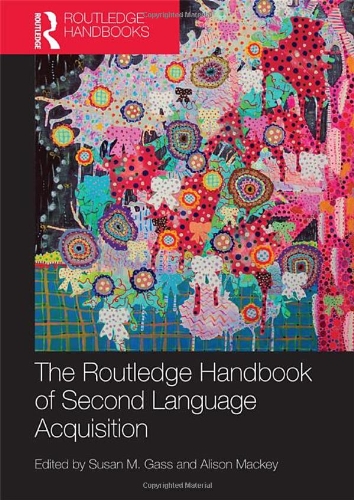

Most ebook files are in PDF format, so you can easily read them using various software such as Foxit Reader or directly on the Google Chrome browser.
Some ebook files are released by publishers in other formats such as .awz, .mobi, .epub, .fb2, etc. You may need to install specific software to read these formats on mobile/PC, such as Calibre.
Please read the tutorial at this link. https://ebooknice.com/page/post?id=faq
We offer FREE conversion to the popular formats you request; however, this may take some time. Therefore, right after payment, please email us, and we will try to provide the service as quickly as possible.
For some exceptional file formats or broken links (if any), please refrain from opening any disputes. Instead, email us first, and we will try to assist within a maximum of 6 hours.
EbookNice Team

Status:
Available0.0
0 reviews
ISBN 10: 0203808185
ISBN 13: 9780203808184
Author: Susan M Gass, Alison Mackey
The Routledge Handbook of Second Language Acquisition brings together fifty leading international figures in the field to produce a state-of-the-art overview of Second Language Acquisition. The Handbook covers a wide range of topics related to Second Language Acquisition: language in context, linguistic, psycholinguistic, and neurolinguistic theories and perspectives, skill learning, individual differences, L2 learning settings, and language assessment. All chapters introduce the reader to the topic, outline the core issues, then explore the pedagogical application of research in the area and possible future development. The Routledge Handbook of Second Language Acquisition is an essential resource for all those studying and researching Second Language Acquisition.
Part I Language in context
1 Interactionist approach
2 The role of feedback
3 Variationist perspectives
4 Sociocultural theory: a dialectical approach to L2 research
5 Complexity theory
Part II Linguistic perspectives
6 Second language phonology
7 Linguistic approaches to second language morphosyntax
8 L2 semantics
9 Pragmatics in second language acquisition
10 Vocabulary
Part III Psycholinguistic and neurolinguistic perspectives
11 Second language processing
12 Frequency-based accounts of second language acquisition
13 The logic of the unified model
14 Processability theory
15 Attention and awareness in second language acquisition
16 Input processing
17 The neurocognition of second language
Part IV Skill learning
18 Development of second language reading skills: cross-linguistic perspectives
19 The acquisition of second language writing
20 Second language speech production
21 Second language speech perception: a cross-disciplinary perspective on challenges and accomplishments
22 Speaking and writing tasks and their effects on second language performance
Part V Individual differences
23 Language aptitude
24 Motivation
25 Identity, agency, and second language acquisition
26 Working memory and SLA
27 Age effects in second language learning
28 The role of educational level, literacy, and orality in L2 learning
29 Fossilization—A classic concern of SLA research
30 Heritage languages and L2 learning
31 Advanced language proficiency
Part VI The setting for learning
32 Learning through immersion during study abroad
33 Classroom research
34 Language learning through technology
Part VII Conclusion: assessment of L2 knowledge
35 Assessing learner knowledge
Glossary
Index
stages of second language acquisition
studies in second language acquisition
principles and practice in second language acquisition
krashen's theory of second language acquisition
first and second language acquisition
error analysis in second language acquisition
Tags: Susan M Gass, Alison Mackey, Routledge, language